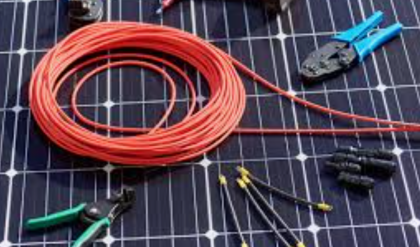Considering the vast expanse of renewable energy options, solar power stands out as one of the most promising and rapidly growing sectors. As the demand for clean energy surges, the infrastructure required to support large-scale solar plants becomes increasingly important. One critical component of this infrastructure is the solar cable, specifically the UL solar cable and solar cable 4mm2, which plays a pivotal role in the efficiency and safety of solar energy systems. Let’s delve into the cost analysis of these cables and understand their impact on the overall economics of solar power plants.

UL Solar Cable: A Reliable Choice
The UL solar cable is renowned for its reliability and safety standards. Underwriters Laboratories (UL) is a globally recognized safety certification company that tests and certifies products to ensure they meet specific safety standards. When it comes to solar cables, UL certification means that the cables have undergone rigorous testing to guarantee their performance and durability under various conditions. This is particularly important for solar plants, where cables are exposed to harsh weather and environmental factors. The cost of UL solar cables might be slightly higher than non-certified cables, but the long-term benefits in terms of safety and efficiency far outweigh the initial investment.
Solar Cable 4mm2: Powering Up Efficiency
The solar cable 4mm2 is a specific gauge of cable that is commonly used in large-scale solar installations. The ‘4mm2’ refers to the cross-sectional area of the conductor, which is a measure of the cable’s capacity to carry electrical current. A 4mm2 cable is ideal for high-current applications, ensuring that the power generated by the solar panels is efficiently transmitted to the grid or storage systems without significant losses. The cost of solar cable 4mm2 is a significant factor in the overall budget of a solar plant, but its capacity to handle high currents makes it a popular choice among engineers and project managers.
Cost Factors of UL Solar Cable and Solar Cable 4mm2
When analyzing the cost of UL solar cables and solar cable 4mm2, several factors come into play. The first is the material cost, which includes the cost of the copper or aluminum used in the conductor, as well as the insulation and protective layers. The price of these materials can fluctuate based on market conditions, affecting the overall cost of the cables.
Another factor is the manufacturing process. High-quality manufacturing techniques are necessary to ensure that the cables meet the stringent requirements of UL certification and can handle the demands of large-scale solar plants. This can increase the cost, but it also ensures that the cables will perform reliably over time.
Installation and maintenance costs are also important to consider. UL solar cables and solar cable 4mm2 are designed for easy installation and minimal maintenance, which can save on labor and upkeep costs in the long run. However, the initial installation can be more expensive due to the specialized equipment and expertise required.
Economic Impact of Choosing UL Solar Cable and Solar Cable 4mm2
The choice of UL solar cables and solar cable 4mm2 has a significant economic impact on the operation of large-scale solar plants. By investing in high-quality, certified cables, solar plant operators can reduce the risk of system failures and downtime, which can be costly in terms of lost energy production and repair costs.
Moreover, the efficiency of solar cable 4mm2 in handling high currents means that less energy is lost during transmission, which can lead to higher energy yields and better return on investment for the solar plant. This efficiency can also help in meeting the increasing energy demands of consumers, which is crucial in a world where energy consumption is on the rise.
Comparing UL Solar Cable and Solar Cable 4mm2 with Other Options
When comparing UL solar cables and solar cable 4mm2 with other options on the market, it’s essential to consider not just the initial cost but also the long-term benefits. While non-certified or lower gauge cables might be cheaper upfront, they may not offer the same level of performance, safety, and reliability.
The UL certification ensures that the cables will stand up to the test of time and harsh conditions, which can be a significant advantage in regions with extreme weather or high solar radiation. Solar cable 4mm2, with its high current capacity, ensures that the solar plant can operate at peak efficiency, which can be a deciding factor in the success of the project.
Future Trends in Solar Cable Technology
As technology advances, we can expect to see new developments in solar cable technology that will further reduce costs and improve efficiency. Innovations such as smart cables that can monitor their own performance and condition, or cables with built-in fault detection systems, are on the horizon. These advancements will make solar power even more competitive and attractive as a renewable energy source.
In conclusion, the cost analysis of UL solar cables and solar cable 4mm2 is a multifaceted process that involves considering not just the initial investment but also the long-term benefits and potential savings. By choosing high-quality, certified cables, solar plant operators can ensure the reliability and efficiency of their systems, which is crucial for the success and sustainability of large-scale solar projects.


